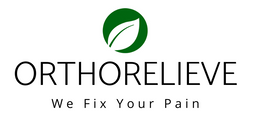Hyperlordosis is a condition where the spine on the lower back (lumbar region) has a pronounced inward curve. While some amount of curvature of the spine is normal, it is the excessive curvature that leads to back pain and discomfort. Hyperlordosis can occur at any age.
Symptoms of hyperlordosis
Symptoms of hyperlordosis may include lower back pain, mobility issues due to tight muscles and stiffness. It can also include numbness and tingling and also in rare cases, loss of bladder control.
Causes of hyperlordosis
There are many factors that can cause hyperlordosis. One of them is the lack of exercise. A weak core, as a result of lack of exercise, means there is less strength to support the spinal column, allowing the spine to curve. A person who has bad posture or has a habit of slouching may develop hyperlordosis over the long term.
An overweight person may also develop hyperlordosis as a result of the excess weight that is straining on the lower back, causing the lumbar spine to shift inward into a curved position. Women who wear high heeled shoes for an extended period of time are also at risk of having hyperlordosis. Underlying spinal conditions like spondylolisthesis can also trigger further development into hyperlordosis. A sedentary lifestyle, related to the lack of exercise, also contributes to hyperlordosis. People who sit all day at the office may have weakened core muscles due to lack of use, resulting in less support and stability for the spinal column.
Treatment of hyperlordosis
Treatment is administered based on the conditions that are causing the hyperlordosis, not the symptoms itself. If the hyperlordosis is caused by an underlying spinal condition, for example, treatment may be made to address the primary condition that is the root cause. This could be in the form of physical therapy, putting the patient through exercises to strengthen core muscles, and also posture improving exercises to rehabilitate the condition. On certain occasions pain relief medication may be prescribed by the physician. Sometimes, a back brace may be worn to keep the spine aligned and provide additional support. Chiropractic adjustments may also be needed to restore the spine's alignment. Finally, in the most severe conditions, surgery may be needed.
Prevention of hyperlordosis
Prevention of hyperlordosis is as simple as making lifestyle changes. Staying mobile and active is the best preventative measure as it keeps the spine and its surrounding muscles as loose and flexible as possible. Core muscle exercises help to provide further support and stability to the spinal column. Movement and exercise helps replenish and strengthen the intervertebral discs, preserving spinal health and delaying the degenerative effects of aging. Drinking plenty of water also helps preserves the discs and maintain their fluid levels.



